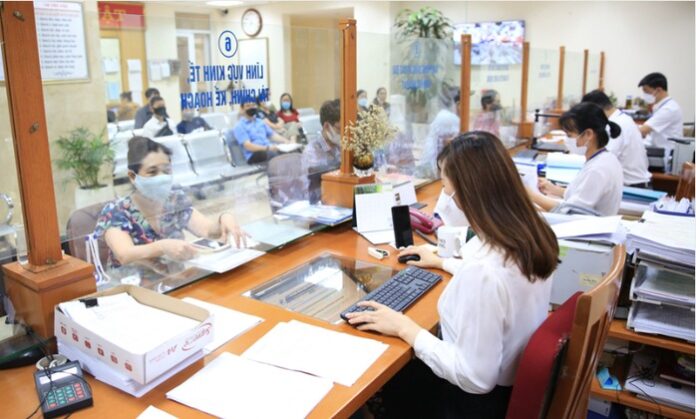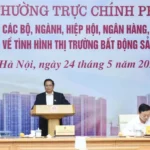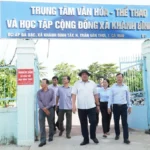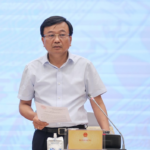The government has issued Decree No. 118 dated June 9th regarding the implementation of administrative procedures through the single-door mechanism and the National Public Service Portal. The Decree specifically regulates the organization of the Single-Door Unit at the ministerial, provincial, and communal levels.
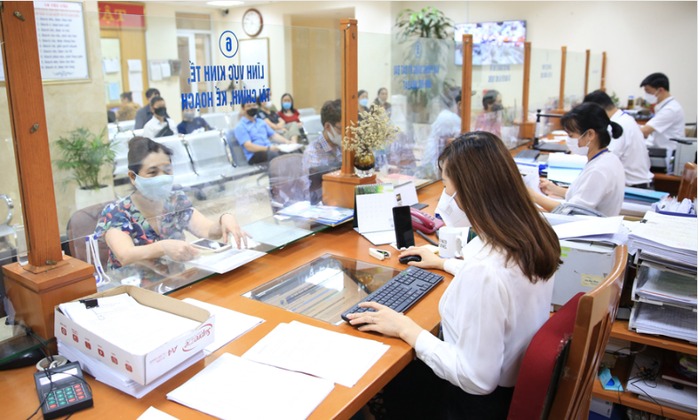
The government has issued new regulations on the organization of the Single-Door Unit at the ministerial, provincial, and communal levels.
According to the Decree, at the ministerial level, the minister or head of an agency at the ministerial level shall decide to establish a unit for receiving and returning results at the ministry or agency under the ministry’s office or at an agency or unit directly under the ministry or agency.
For central agencies organized according to the vertical system at the local level, the head of the agency shall assign officials, public employees, and civil servants to work at the Provincial Public Administration Service Centers and the Communal Public Administration Service Centers to receive and process administrative procedures within their jurisdiction.
At the provincial level, the Provincial People’s Committee shall decide to establish the Provincial Public Administration Service Center as an administrative organization under the Office of the Provincial People’s Committee, with its own seal and separate account to perform the assigned tasks and powers.
In centrally-run cities, based on considerations of local population management, urban community organization, assessment of the level of scientific and technological application, innovation, and digital transformation in the city, the City People’s Committee shall decide to establish the Provincial Public Administration Service Center, which is an administrative organization directly under the City People’s Committee.
If this model is not chosen, the City People’s Committee shall decide to establish the Provincial Public Service Center.
At the communal level, the Decree stipulates that the Commune People’s Committee shall decide to establish the Communal Public Administration Service Center as an administrative organization under the Commune People’s Committee, with its own seal and separate account to perform the assigned tasks and powers.
The Commune People’s Committee shall decide on the arrangement of the reception points and the return of the results of the settlement of administrative procedures of the Communal Public Service Center in the locality based on the natural area, population scale, socio-economic conditions of the locality, and the number of administrative procedure dossiers.
The government clearly states that Communal Public Service Centers shall not be established in localities that choose the model of a single-level Public Service Center directly under the Provincial People’s Committee.
Decree No. 118 also clarifies the scope of administrative procedure reception at the Single-Door Unit. Accordingly, the Provincial and Communal Public Service Centers shall receive administrative procedures regardless of administrative boundaries within the provincial scope, including the following procedures:
First, administrative procedures within the jurisdiction or interconnected jurisdiction of the Provincial People’s Committee, the Provincial People’s Committee Chairman, and specialized agencies under the Provincial People’s Committee.
Second, administrative procedures within the jurisdiction or interconnected jurisdiction of the Commune People’s Committee, the Commune People’s Committee Chairman, and specialized agencies under the Commune People’s Committee within the province.
Third, administrative procedures within the jurisdiction or interconnected jurisdiction of agencies organized according to the vertical system at the local level.
Fourth, administrative procedures within the jurisdiction of the ministries and branches assigned to the locality for reception.
With this regulation, regardless of which commune or district they reside in, citizens can submit their documents to any public administration center within the province. This rule applies to all types of administrative procedures, even those under the responsibility of the communal or provincial People’s Committees, or the vertical system agencies.
The Great Race to Renovate: A Tale of Two Offices
The Ca Mau provincial authorities have dispatched inspection teams to review the progress of renovation works at the newly merged communes’ office and residential premises. With a sense of urgency, the teams are ensuring that the physical infrastructure is swiftly upgraded to provide a reassuring and conducive environment for the officials to carry out their duties with peace of mind.
When Will the Building Permit Be Officially Scrapped?
“During a press conference held on June 4th, Deputy Minister of Construction, Nguyen Danh Huy, emphasized the ministry’s unwavering commitment to streamlining administrative procedures related to licensing. He assured that the ministry is dedicated to thoroughly reviewing, simplifying, and, if necessary, abolishing redundant processes. The ultimate goal is to create a conducive environment that empowers citizens, businesses, and local communities by providing them with efficient and accessible services.”


























